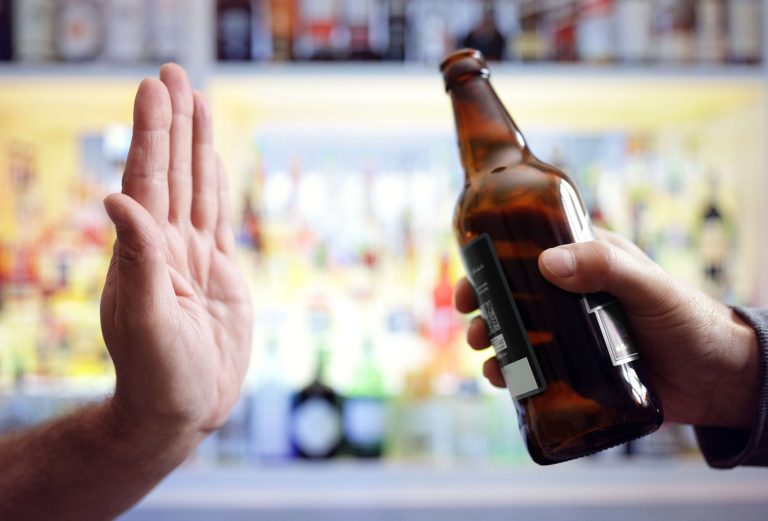This is your brain on alcohol
In conclusion, understanding how alcohol affects dopamine levels is key to grasping the bigger picture of addiction. When people drink, they might feel a temporary high, but over time, their brain gets used to that boost and starts to need more to feel anything at all. This cycle can lead to serious issues, not just with addiction but with overall mental health. If you or someone you know is dealing with these challenges, it’s crucial to seek help. Recovery is possible, and with the right support, the brain can heal and regain its balance.
- These changes also help to rewire your brain away from thinking of alcohol as a reward, reducing the risk of a relapse to heavy drinking the longer you stay away from alcohol.
- These can include intense cravings for alcohol, mood swings, anxiety, depression, and difficulty experiencing pleasure from everyday activities.
- From there, the information is passed on to the various brain areas where dopaminergic neurons terminate.
- Over time, as tolerance develops and more alcohol is needed to achieve the same effects, the cycle of addiction can take hold.
In the frontal cortex, serotonin (5-HT) primarily contributes to the inhibition of pyramidal cells, thus, providing prefrontal inhibition of potentially detrimental behavior. However, 5-HT can exert both excitatory and inhibitory transmission depending on the receptor being activated (i.e. the serotonin 1A receptor (5HT1A) is inhibitory and the serotonin receptor 2A (5HT2A) is excitatory on apical dendrites) 12,13. Medications like naltrexone and bupropion target dopamine receptors to reduce cravings and help restore normal dopamine activity in the brain. « The study offers little indication of whether moderate drinking is truly good, bad, or indifferent for long-term brain health, » he says. Yes, research shows that men and women can experience different effects from alcohol. Women might have stronger withdrawal symptoms and may struggle more with addiction.
Does Alcohol Increase Dopamine
Consequently, alcohol’s effects on these receptor subtypes also might influence GABAergic signal transmission in the brain. The development of positron imaging technique (PET) and the radiotracer 11C‐raclopride in the 1990s made it possible to study in vivo dopamine function in humans. A series of human imaging studies over the last decade have demonstrated that alcohol 93, 94 as well as other drugs of abuse 95 increase striatal dopamine release. This is further corroborated by the findings that self‐reported behavioural measures of stimulation, euphoria or drug wanting by alcohol correlates with the magnitude and rate of ventral striatum dopamine release 96–98, 94, 99, 100. These studies clearly substantiated the involvement of dopamine in the reinforcing effects of alcohol and closely mimicked the findings of the preclinical studies.
- Both preclinical and clinical studies have suggested that alcohol activates the mesolimbic dopamine system (defined as a dopamine projection from the ventral tegmental area (VTA) to the nucleus accumbens (NAc, i.e. ventral striatum)) leading to a euphoric sensation.
- For example, increased serotonin release after acute alcohol exposure has been observed in brain regions that control the consumption or use of numerous substances, including many drugs of abuse (McBride et al. 1993).
Professional development
Many aspects of cognitive function such as behavioral flexibility, planning of goal-directed strategies, and inhibitory control are dependent upon a balance of activation of D1 and D2 receptors in the PFC (Arnsten et al., 1994; Floresco & Magyar, 2006; Gao, Wang, & Goldman-Rakic, 2003). Detailed methods for these assays are available in Supplementary Materials alcohol and dopamine and Methods. At the alcohol addiction rehab center in Portland, OR, therapists work with good people who experience a disconnect.
Research Snapshot: How alcohol reshapes the brain’s dopamine system long after drinking stops
Dopamine release was compared across varying train stimulations (6 pulses at the indicated frequencies) before and after nAChR blockade with DHβE (1 µM) in caudate and putamen (B, C; values normalized to single-pulse values before DHβE application). Gene expression of cholinergic interneuron markers and several nAChR subunits was not changed following chronic alcohol consumption and abstinence (D, E). The development of alcohol dependence is closely tied to these changes in the dopamine system. As the brain becomes accustomed to alcohol-induced dopamine release, it may struggle to produce feelings of pleasure and reward without alcohol.
Alcohol and Neurotransmitter Interactions
The consequences of the alterations in dopamine signaling we observed may be numerous. Neurobiologically, striatal dopamine alters intracellular signaling that affects synaptic plasticity 42. Activation of D1 dopamine receptors increases the excitability of the direct pathway medium spiny projection neurons (MSNs) 59, while D2 receptor activation inhibits GABAergic synaptic transmission within striatum through presynaptic actions on indirect pathway MSNs. In addition, D2 receptors can alter striatal dopamine and acetylcholine levels and inhibit cortical glutamatergic transmission directly or indirectly 60,61,62. Furthermore, the balance of altered dopamine changes and subsequent effects on cellular excitability and fast synaptic transmission in the caudate and putamen will likely dictate the relative behavioral control by the associative and sensorimotor circuits. In this context, the decreases in release in the putamen of the repeated abstinence male monkeys may limit behavioral marijuana addiction plasticity to a greater extent in this region relative to the caudate.

However, subsequent double‐blind placebo‐controlled trials found no effect on relapse or related behaviours 173, 174. Currently, due to the knowledge of the addictive potential of dopamine agonists, combined with the lack of consistent findings from clinical studies, it is suggested that dopamine receptor agonists do not hold promise as a treatment for alcohol dependence. Studies elucidating the underlying mechanism of action of the complex dopamine–alcohol interaction have been conducted. On the other hand, local administration of the dopamine D2 receptor antagonist, sulpiride, into the anterior VTA did not alter alcohol nor sucrose intake in high‐alcohol‐preferring rats 142. It should also be mentioned that accumbal dopamine D1 receptor might regulate alcohol‐induced reward.
In addition, little is known about the molecular mechanisms of craving and addiction. Knowledge of the higher levels of neural integration is required to completely determine how alcohol affects these processes. More important, a detailed understanding of alcohol’s mechanism of action in the brain is a prerequisite to discovering effective treatments for both alcohol abuse and alcoholism. Long-term alcohol use can significantly impair dopamine production and receptor function, but the brain has a remarkable ability to heal over time with sustained abstinence.

Keep This Common Disorder Under Control To Reduce Dementia Risk
Alcohol triggers your pancreas to make toxic substances that can eventually lead to pancreatitis, or the inflammation and swelling of the blood vessels in the pancreas. Digestive enzymes, which are normally inactive until they reach the small intestine, begin to work on the tissues of your pancreas, causing damage that can lead to infection, bleeding and permanent damage. Stimulants like amphetamine and cocaine affect dopamine directly, whereas other drugs appear to affect it indirectly. Most people I talk to about alcoholism and what causes it have no idea that it is a brain chemistry problem and genetic. Although we don’t always think of it as such, alcohol is a psychoactive substance, meaning it can radically change the way we think and feel. Here, we look at some of the ways that alcohol can change our mood and our behaviour, and how it does that.
This means we need to drink more alcohol to get the same effect, sending us down the road to dangerous drinking habits or perhaps misuse. The amount of time it takes for the brain to recover and dopamine levels to normalize varies from person to person. On average, it takes about 90 days for most people to experience a return to normal dopamine levels.

Understanding these sex-specific differences in the development of addiction is key to providing effective prevention and treatment. It’s not about saying one gender is more vulnerable than the other, but about recognizing that everyone’s journey with addiction is unique. By breeding rats with similar alcohol-consumption patterns (e.g., high consumption or low consumption) with each other for several generations, researchers created two strains with distinctly different preferences for alcohol. Male and female rhesus macaques (Macaca mulatta; 5.5–8.5 years old at study onset) obtained from the Oregon National Primate Research Center were used in the current studies. All procedures were conducted in accordance with the NIH Guide for the Care and Use of Laboratory Animals and approved by the Oregon National Primate Research Center Institutional Animal Care and Use Committee.
